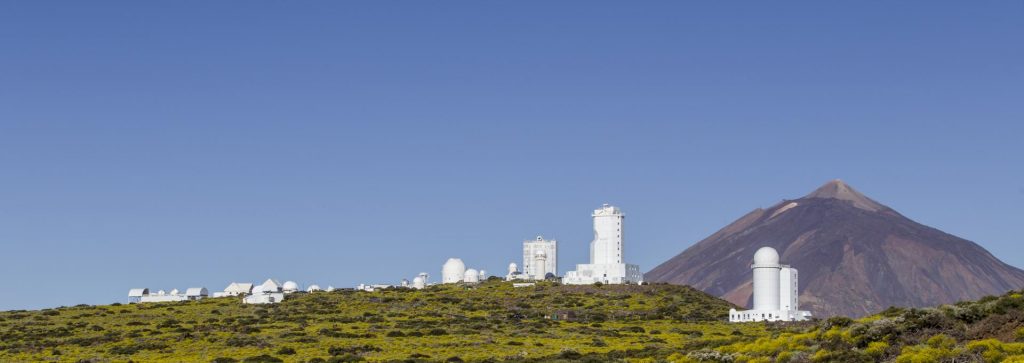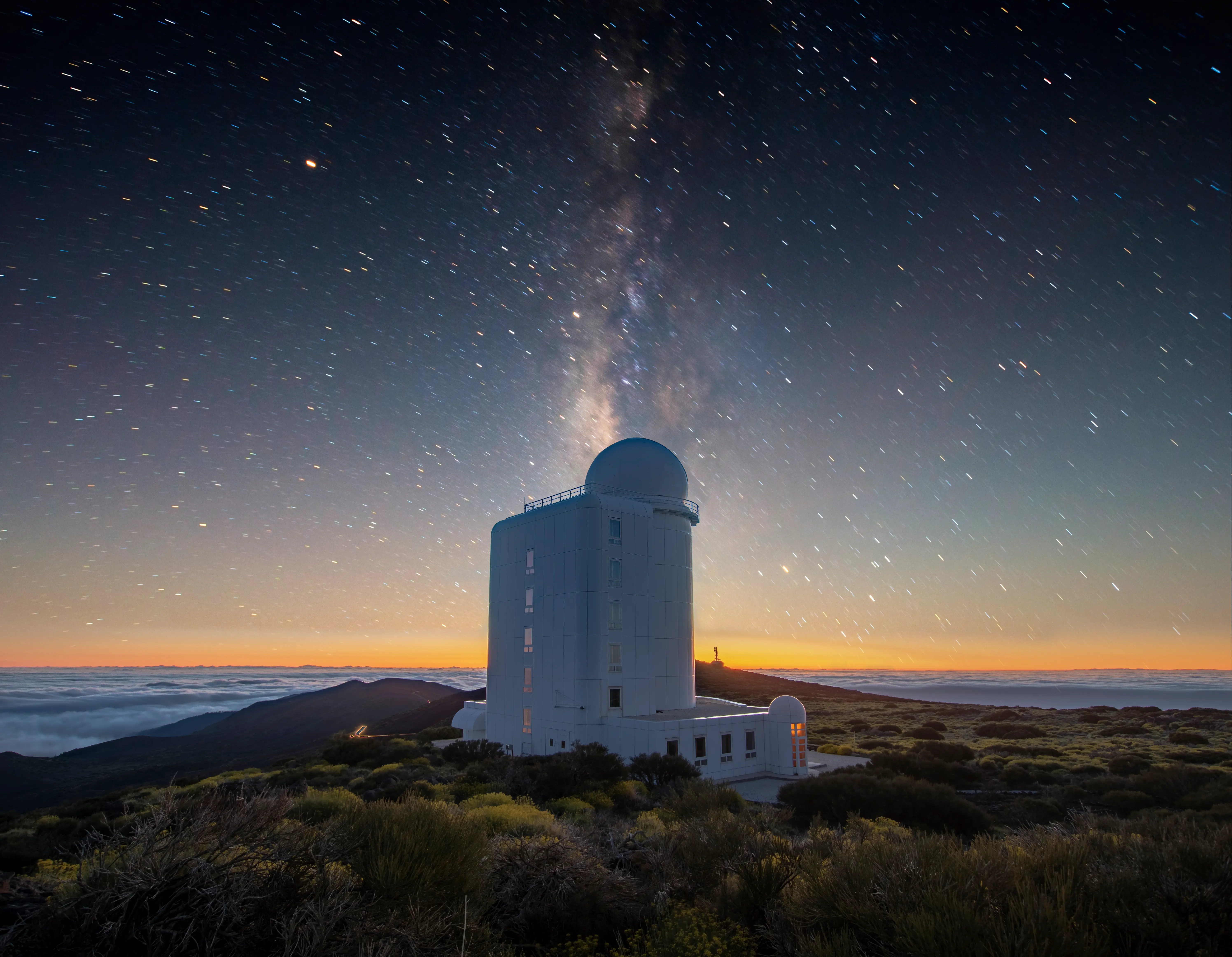The Canary Islands is a destination of sun and beach, but also of nature and adventure. However, what many people don’t know is that the archipelago is way more than this.
There is a kind tourism that attracts thousands of visitors every year that come to see the Canarian sky, as there is a strong commitment to the study of the cosmos in the Canaries, thanks to the Canary Islands observatories.
The fact that the Canary Islands is one of the main centres of astronomical tourism and one of the most important places in the world when it comes to studying the skies is no coincidence.
This archipelago has the clearest and cleanest skies in the world with very low light pollution. For this reason, astronomical observation on the islands is protected by the Law 31/1998, known as the ‘Law of the Sky’.
So that you can find out more about everything related to observatories in the Canary Islands, in this article we will tell you which ones are the most important, what they do, both scientifically and how important it is for the Canary Islands to study the skies.
What is the most important Canary Islands astronomical observatory?
The Canary Islands have one of the most important institutions in the field of astronomy, the Instituto de Astrofísica de Canarias (Canary Islands Astrophysics Institute), which comprises several observatories that include more than 60 institutions from 20 countries.
Of all the facilities that the institute has, the most important of all is undoubtedly the Teide Observatory, which we will now go on to discuss in more detail.
Teide Observatory

Astrophysics begins with what will eventually be the most important astronomical observatory in the Canary Islands, the Teide Observatory on the island of Tenerife at an altitude of more than 2,390 metres, in the Izaña massif above the well-known ‘sea of clouds’.
Founded in 1959, its first professional telescope was installed in 1964. It has the best solar and robotic telescopes in Europe, such as those of the GLORIA project that allows remote control of telescopes on four continents through the Internet.
It is one of the observatories in the Canary Islands that stores images from the IAC-800 telescope, which can be seen by all astronomy lovers. It also has very advanced technology with high data transmission capacity (rediRIS-NOVA) that allows the transfer of those data generated to first level processing and storage centers.
Which are the most important Canary Islands observatories?
The Canarian archipelago has unique environmental features for the installation of an astronomical observatory in the Canary Islands. For this reason, it has earned the label of unique astronomical destination.
It has a very particular relief, the result of thousands of years of erosion, giving rise to the differentiation of a multitude of microclimates and surprisingly contrasting landscapes and vegetation.
Nevertheless, the astronomical observatories of the Canary Islands offer the possibility of taking impressive pictures of the stars and the timelapse at night, being one of the great attractions of the Canary Islands' summits.
Next, we are going to talk about the most important observatories in the Canary Islands apart from the Teide Observatory.
Roque de los Muchachos Observatory

The complex that groups the Roque de los Muchachos Observatory is the second most important within the Instituto de Astrofísica de Canarias.
Located on the island of La Palma, it offers clean and protected skies, more than enough conditions for star observation.
It has one of the most complete telescopes in the world, the large GRANTECAN telescope, with which you can get clear views of the Canarian skies.
Canary Islands Space Centre
It is perhaps one of the observatories in the Canary Islands that people know least about. Built in the 1960s to support NASA's Mercury program.
It is located on the island of Gran Canaria, in the town of Maspalomas, equipped with large antennas dedicated to the monitoring and control of satellites, also receives and processes images from a large number of space vehicles from NASA, ESA and the Japanese JAXA.
Temisas Astronomical Observatory
This is one of the Canary Islands' astronomical observatories that is most focused on tourism and the dissemination of astronomy in the Canaries.
Located in the Gran Canarian municipality of Agüimes, at about 850 metres above sea level, it has become a reference point for stargazing in Gran Canaria in recent years.
It has a very advanced telescope, the LX600 ACF model with a 14-inch mirror that allows to observe the Canarian skies with great clarity. It also has small telescopes for visitors, interpretation and exhibition rooms.
Canary Islands and the stars

The Canary Islands and the stars go hand in hand, as you have seen throughout the article. The islands are located in an incomparable setting, with a great geographical location and skies free of light pollution that are ideal for stargazing. These observatories, in addition to being world-class scientific and dissemination centres, are a major tourist attraction, considerably increasing the islands' tourist offer.
Therefore, the Canary Islands are synonymous with stars, clean skies and the study of what goes on above our heads and which, many times, goes unnoticed by us. Thus, we must give the importance that the astronomical observatories of the Canary Islands deserve for the work they carry out.

